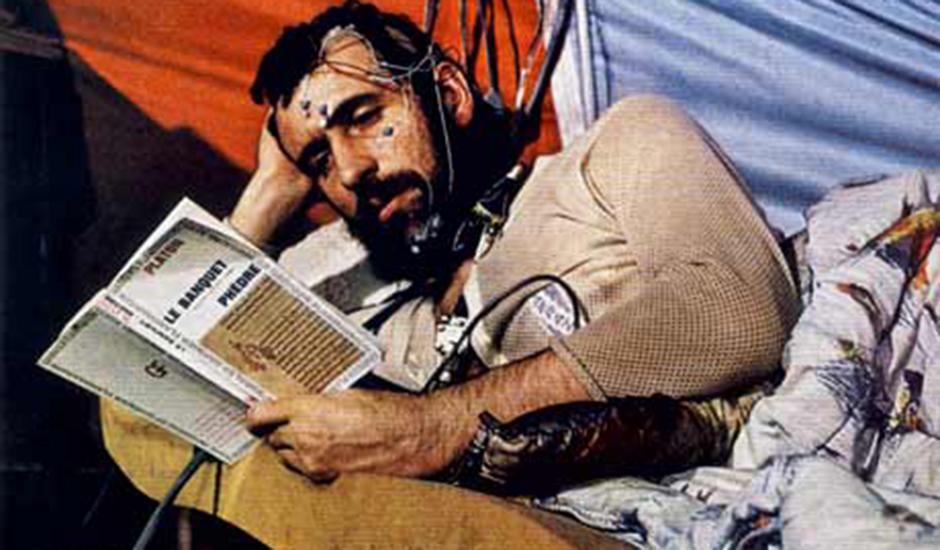Last month, I blogged about a 1928 article which told of the demise of the great Norwegian explorer Roald Amundsen, so I would be remiss if I didn’t post a passage from “Moving to Mars,” Tom Kizzia’s wonderful New Yorker article which investigates NASA’s attempts to understand the isolating effects of a potential Mars mission, which uses the 1898 Antarctic voyage of the Belgica, of which Amundsen was a crewmember, as a seafaring parallel. That ship ran into major difficulties, among them the remoteness of the trip playing havoc with the minds of the discoverers. Kizzia visits a contemporary experiment in astronaut sequestration (and other pragmatic problems) in Hawaii (“Mauna Loa is our Martian mountain,” as it’s put), a federal study similar to what speliologist Michel Siffre attempted by his lonesome in the 1960s-70s. An excerpt:
A century after the Belgica’s return, a NASA research consultant named Jack Stuster began examining the records of the trip to glean lessons for another kind of expedition: a three-year journey to Mars and back.“Future space expeditions will resemble sea voyages much more than test flights, which have served as the models for all previous space missions,” Stuster wrote in a book, Bold Endeavors, which was published in 1996 and quickly became a classic in the space program. A California anthropologist, Stuster had helped design U.S. space stations by studying crew productivity in cases of prolonged isolation and confinement: Antarctic research stations, submarines, the Skylab station. The study of stress in space had never been a big priority at NASA—or of much interest to the stoic astronauts, who worried that psychologists would uncover some hairline crack that might exclude them from future missions. (Russia, by contrast, became the early leader in the field, after being forced to abort several missions because of crew problems.) But in the nineteen-nineties, with planning for the International Space Station nearly complete, NASA scientists turned their attention to journeys deeper into space, and they found questions that had no answers.“That kind of challenging mission was way out of our comfortable low-earth-orbit neighborhood,”Lauren Leveton, the lead scientist of NASA’s Behavioral Health and Performance program, said. Astronauts would be a hundred million miles from home, no longer in close contact with mission control. Staring into the night for eight monotonous months, how would they keep their focus? How would they avoid rancor or debilitating melancholy?
Stuster began studying voyages of discovery—starting with the Niña, the Pinta, and the Santa Maria, whose deployment, he observed, anticipated the NASA-favored principle of “triple redundancy.” Crews united by a special “spirit of the expedition” excelled. HeO praised the Norwegian Fridtjof Nansen’s three-year journey into the Arctic, launched in 1893, for its planning, its crew selection, and its morale. One icebound Christmas, after a feast of reindeer meat and cranberry jam, Nansen wrote in his journal that people back home were probably worried.“I am afraid their compassion would cool if they could look upon us, hear the merriment that goes on, and see all our comforts and good cheer.” Stuster found that careful attention to habitat design and crew compatibility could avoid psychological and interpersonal problems. He called for windows in spacecraft, noting studies of submarine crewmen who developed temporarily crossed eyes on long missions. (The problem was uncovered when they had an unusual number of automobile accidents on their first days back in port.) He wrote about remote-duty Antarctic posts suffering a kind of insomnia called “polar big eye,”which could be addressed by artificially imposing a diurnal cycle of light and darkness.
Bold Endeavors was a hit with astronauts, who carried photocopied pages into space, bearing Stuster’s recommendations on workload, cognitive impairment, and special celebration days. (He nominated the birthday of Jules Verne, whose fictional explorers headed to the moon with fifty gallons of brandy and a “vigorous Newfoundland.”) But historical analogies could take NASA only so far, Stuster argued. Before humans went to Mars, a final test should run astronauts through “high-fidelity mission simulations.”To the extent possible, these tests should be carried out in some remote environment, whose extreme isolation would bring to bear the stress and confinement of a journey to outer space.•

